North Carolina Cigarette Plant to Switch to Producing Batteries
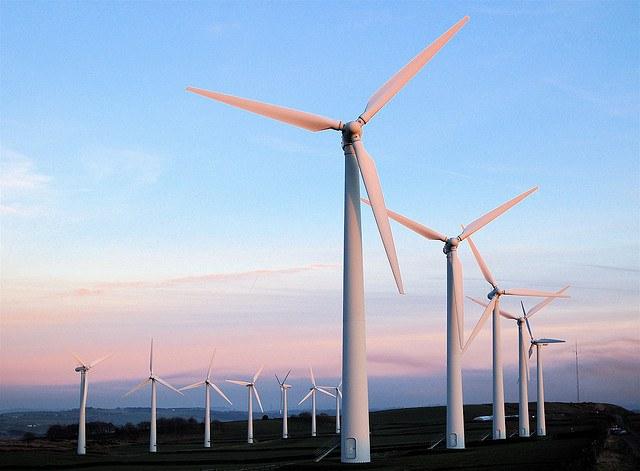

Former Philip Morris cigarette plant in Concord, North Carolina will produce batteries to store energy for wind and solar farms, Fortune reports. The Swiss owned startup Alevo, which manufactures batteries, bought the 3.5 million square foot plant. The batteries are lithium-iron-phosphate and can be charged within 30 minutes, run 24/7 and last for 40,000 charges.
The North Carolina plant used to manufacture a billion cigarettes annually. However, smoking is not as popular and many Americans are either smoking less or quitting altogether. Years ago, Philip Morris stopped producing cigarettes at the plant. Now, it will produce batteries and create jobs while doing so. Alevo says it will hire 500 people in the next year, and within three years it will create 2,500 jobs. When the plant produced cigarettes, over 2,000 people were employed there.
The Guardian reports that Alevo bought the factory for $68.5 million, and the company has spent 10 years developing the batteries which store two megawatts (MW). Power plants can install them on-site. Jostein Eikeland, Alevo’s CEO, said that the company has an agreement with the Turkish state power authority and is in discussion with U.S. power companies. “It’s a gamechanger he said. “If we can take some of the massive energy that is wasted today by mismanagement of the grid and inject it where it is needed everybody wins.”
There are inefficiencies in today’s power grid. Battery storage can help. As Eikeland said, “Our batteries paired with the powerful analytical software we’ve developed have the potential to eliminate as much as half of the those loses in the grid.”
Renewable energy is expected to continue to grow. Within the next 10 years, over 1,300 gigawatts (GW) of wind and solar energy is expected to come online, according to a Navigant Research report. That will create an “unprecedented amount of instability on the grid,” the report states. That’s where battery storage comes in. Navigant Research predicts that the installed capacity of energy storage systems for solar and wind power integration will total 21.8 GW from 2013 to 2023. Batteries for utility energy storage is expected to grow from $164 million in 2014 to over $2.5 billion in 2023.
Image credit: Charles Cook
Social Change Agents See Impact as Long-Term
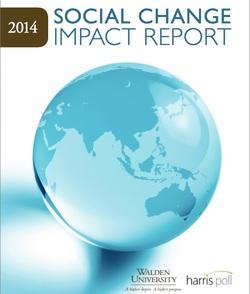

Submitted by Editorial Team
“Be the change you wish to see in the world,” is an oft-quoted statement of Gandhi. Social change indeed begins at the individual level, involving increased awareness and understanding, attitudinal change, and increased civic participation. This individual change eventually leads to the building of collective public will, and results in changes at the community, institutional and policy level.
Walden University has brought out its 2014 Social Change Impact Report that provides interesting insights into the perceptions and perspectives of people around the world who are committed to helping bring about social change. The fourth annual survey was commissioned by Walden and conducted online by Harris Poll. The survey was designed to assess the state of social change, and included the perspectives of more than 9,000 adults in Brazil, Canada, China, Germany, India, Jordan, Mexico and the United States.
The findings of the survey suggest that more people believe it is important to contribute to long-term changes than those who believe it is important to contribute to immediate changes. More social agents also believe that their efforts today contribute to positive change in the future compared with immediate changes. However, while three in four social change agents believe their contribution is making a difference, they are less likely to believe they are impacting systemic change, resulting in long-term social transformation.
Walden University president, Dr. Cynthia Baum, said that the findings of the 2014 report reveal that engagement in social change is highly valued, but a majority of contributors feel that everyone could be doing more to achieve an enduring impact. In terms of bringing behavioral change in others to contribute to improving lives, half of the adults believe they are able to make a major or moderate impact.
On average, 73 percent of adults who have ever engaged in positive social change said that is important that an individual’s involvement with positive social change today contributes to long-term changes that will improve people’s lives in the future. On the other hand, 61 percent of adults say it is important to contribute to immediate changes that improve the lives of people now. More adults also believe it is more likely their involvement today contributes to long-term change.
Importantly, the overall confidence levels of social change agents remain high, but they feel they could be doing more. 77 percent of the people, on average, say they are confident that their involvement is making a difference. However, only 27 percent of adults overall are highly satisfied with the kind of impact they are making, and as many as 24 percent are not at all satisfied. On average, only 36 percent are highly satisfied with the frequency of their engagement in positive social change activities and the impact of their contribution.
The good news is that involvement in positive social change continues to remain widespread and diverse. On average, 82 percent of the respondents reported that they have done something to engage in positive social change in the past six months. Nearly half of the people across the world engaged in social change using digital technology. Using digital technology is the top social change activity in Brazil, India, Mexico, China and Jordan. On the other hand, in Canada, Germany and the U.S., the top social change activity is donating money, goods or services.
By Vikas Vij, staff writer for the Sustainable Development news and editorial section on Justmeans. Vikas is an MBA with 20 years of managerial and entrepreneurial experience and global travel. He is the author of The Power of Money (Scholars, 2003), a book that presents a revolutionary monetary economic theory on poverty alleviation in the developing world. Vikas is also the official writer for an international social project for developing nations "Decisions for Life" run in collaboration between the ILO, the University of Amsterdam and the Indian Institute of Management.
The Business Guide to Talking About Carbon


After a few years, offsets gained something of a stigma in the environmental community. Thoughts drifted to wealthy celebrities using offsets to justify weekly use of private jets or Coldplay's infamous mango tree debacle, and critics were quick to bemoan offsets as an easy pathway to greenwashing or a half-hearted attempt to quell eco-guilt. But the market has changed drastically in the past 17 years.
"I know you mentioned in an article about the Coldplay thing, and that's the ugly elephant in the room that nobody likes to talk about who's in this industry," Nancy Bsales, manager of carbon solutions for TerraPass, said with a laugh in a recent interview. "But over the years the transparency and the quality of offsets has improved tremendously. There are so many strong standards out there that a company or an industry can be very confident that what they're doing is real."
Rather than a bandage tasked with covering up environmental indiscretions in one fell swoop, today's carbon market actually offers a deeper fix. "On a corporate level, when companies look at [offsets], they look at them as a way to bridge the gap," Bsales continued. Even for companies that are on top of their game as far as efficiency and utilizing new technologies, emissions are still created, she noted, and that's where offsets come in.
"So what do you do with what's left? And that's when you take into account the market-based tools of renewable energy credits or carbon offsets," Bsales said. "And then the real approach is supposed to be: On a yearly basis [companies] are supposed to become so much better at efficiencies and technologies that [they] need less and less offsets. That is the true goal that we want everyone to look at."
Despite these changes in the marketplace, some companies may hesitate to incorporate offset decisions into their sustainability communications -- whether it's because they're new to sustainability or simply worried of being nailed for greenwashing. We sat down with Bsales to get her top tips for sharing your offset decisions effectively -- and making them a highlight rather than an afterthought in your sustainability communications.
1. Make your offsets tangible
As we've touched on earlier in this series, choosing a quality carbon offset can take time. It can take even more time to select an offset or renewable energy credit that has a genuine connection to your company -- but it's time well spent.
Choose offsets that make sense for your company: Invest in a project in your own community, or select projects based on sustainability goals that align with your company's culture.
"You have to communicate in a way that [the projects] are not intangible to any of the stakeholders," Bsales said. "If your biggest goal as a company is waste reduction and you're picking the technology, you can say: 'Waste reduction is one of our biggest goals, and we've gotten so far. We've reduced our waste by X amount of tons, but we know we still produce some waste. So we're funding landfill gas capture so the waste we're producing ... is not spewing gases into the atmosphere."
Be ready to explain why you chose the project, which communities will benefit from it and how it will help you meet internal sustainability goals. When a company's offset decisions align with its core values, communications professionals will have a much easier time sharing these decisions in a way that makes sense across the board.
2. Tailor your message for the listener
"Somebody who can communicate sustainability really well is very talented," Bsales said with a laugh. "Because you ned to keep your customers happy; you need to keep your employees happy; you need to keep your stakeholders, your board members happy. You're addressing a lot of different groups, and each of those groups may have a different need from you."
This is the constant balancing act for anyone working on sustainability within a company, and it all starts with communications. A board of trustees, for example, will be far more interested in how a given decision saves money or improves efficiency, while customers and employees may want to learn more about how the decision benefits communities and the environment. Tailor your messaging to each important stakeholder group within your company, and be sure to include details that are relevant to them.
"Say you're addressing offsetting: How you communicate that to your employees, your customers and your board of trustees may be very different," Bsales continued. "That's an important thing to learn — how to bring it all together — and that's where the importance of making it a connection for each of those groups comes into play."
3. Give your communications the greenwash test
After you decide on a strategy, it's important to have your communications reviewed by a third party for accuracy, Bsales advises. A provider like TerraPass is a great candidate for this, as are sustainability consultants.
"I call it 'carbon accuracy,'" Bsales said simply. "Have someone look at your communications for carbon accuracy. In a company's communications, greenwashing is very, very dangerous. It can backfire."
4. Don't forget your employees
Employee engagement has become a hot topic in the sustainability space, and communicating your offset decisions is no different."In the culture of a company, when you're communicating your sustainability, include your employees. Let them be part of the decision-making," Bsales advised. "When it comes to employees, it's an important job as a company to communicate their offset purchases clearly and in an understandable manner so they receive more buy-in across the board."
This applies not only to carbon offsets, but also to a company's broader sustainability goals, such as energy, waste and water reduction targets, she added. "By engaging your employees, you'll begin to see more actions on the efficiency level," she said. "The actions that you need to meet on a corporate level almost need to be grassroots actions."
5. Make a decision and own it
Once you've selected a quality offset, don't be afraid to be confident in your sustainability communications.
"Embrace it. Walk the walk," Bsales said. "If you know that you chose a phenomenal project — high-quality, real, transparent, and is going to be retired and not double-counted — go out and bang on your chest a little bit. Feel confident ... because you're taking the steps to move us globally to a better future and business to a new climate."
6. Recognize it's about the journey, not the destination
"Be proud of whatever part of the journey you're on, and feel comfortable communicating that," Bsales advised. "Whether you're someone that's looking at your carbon footprint for the first time ... or you're ranked in the top 10 on the EPA Green Power Partner list, wherever you are, you are a leader for that area."
Smaller companies that are unfamiliar with sustainability may feel uncomfortable tooting their own horns, Bsales noted, but even small steps — such as setting an energy-reduction target and choosing to offset the difference until the goal is met — are vital in bringing companies in the right direction.
"No matter where you are on the journey, you're an important part of the change," she concluded. "And you should feel confident in the steps you're taking."
Antarctic Melting Prompts South Miami to Secede


It’s official, folks: The Antarctic polar ice cap is melting faster. After years of debate, scientists have confirmed that within the next couple of hundred years, coastal cities across the world will see a dramatic change to their beachfront with a sea level rise up to 10 feet.
And nowhere in the U.S. is this change liable to be more evident than on the flat, semi-tropical shorelines of Florida, where cities were literally built to the water’s edge, taking advantage of the state’s flat-as-a-pancake vistas.
Not surprisingly, one small city in South Florida isn’t happy with this news. The city of South Miami, a comfortably residential area that has recently been deluged by flooding from hurricanes, has developed a climate change strategy.
It plans to secede from the state of Florida.
Or at least it hopes to. Earlier this month, the city council of South Miami passed a resolution that advocates for “the legal separation of Florida into two separate states,” and for the creation of a 51st state that would be called ‘South Florida.’ It plans to circulate the resolution with the other 23 counties in its proposed state to see if it can gain support. The petition then goes to Tallahassee and Congress for -- unlikely -- consideration.
If it did go through, the dividing line would sit just north of the state’s most lucrative and populous counties. It would also effectively lop off Tallahassee’s fiduciary relationship to:
- Tampa and St. Petersburg ports
- Disney World
- The Florida Keys
- Miami Dolphins
Losing the Keys may just be a matter of sooner than later given scientists’ new projections for Florida’s southern coastline. But Disney World would certainly be a financial hit for Tallahassee. Revenues for the amusement park topped $2 billion in first nine months of 2013.
The same impact could be said for the Tampa Bay area, which includes the state’s largest port and the country’s 16th busiest. The foreshortened state of Florida would get none of the taxes from the four cruise lines that stop in Tampa’s harbor. It would also miss out on being able to call St. Pete "Da 'Berg" of Florida.
And while the Miami Dolphins didn’t pull top ranking this year (far from it at No. 18), losing the popular football team could be devastating for a state where the survival of bottlenose dolphins post-BP spill is less talked about than the outcome of the next Miami Dolphins game.
But according to South Miami’s city council, revenues aren’t at the heart of this resolution. Climate is. Climate and a sinking feeling that legislators in Florida’s sunny Panhandle as Mayor Philip Stoddard put it, “would just love to saw the state in half and just let us float off into the Caribbean.”
Admittedly, having lived for four years in Southern Florida, I can see where he is coming from. There’s a gulf at times between the sunny flatlands of the state’s Panhandle, where business is efficiently decided and the lush, green tropics of the south where the money is made (or spent, depending upon that year’s hurricane season).
But Tallahassee’s intransigence concerning climate change is really no surprise. After all, it’s been driven, to a large degree by the same build-or-bust focus that has settled places like Miami and Tampa, cleared vast tracks of the tropics, created more than 80 industrial Superfund sites across the state and led to the very dilemma being debated today. And in fact, is still being debated in the continuing boom of Miami Beach where storm damage from hurricanes and rising tidewaters haven’t dampened the appetite for new coastline construction.
But will drawing an invisible line between the two regions help?
Apparently, yes. South Miami has managed to join forces with several other communities in the area and has created a task force with a fit-one-fit-all Regional Climate Action Plan. The message is clear: If the state capitol won’t lead, those in jeopardy of losing their cities to flooding and global warming, will.
Climate change debates or no, it’s a message that Governor Rick Scott, who is currently tied in the polls for next month’s elections, will probably hear loud and clear.
Image of glaciers outside of Patagonia, Chile: Dimitry B.
Image of flooded South Miami: Maxtrz
Should We View Meat As a Luxury?
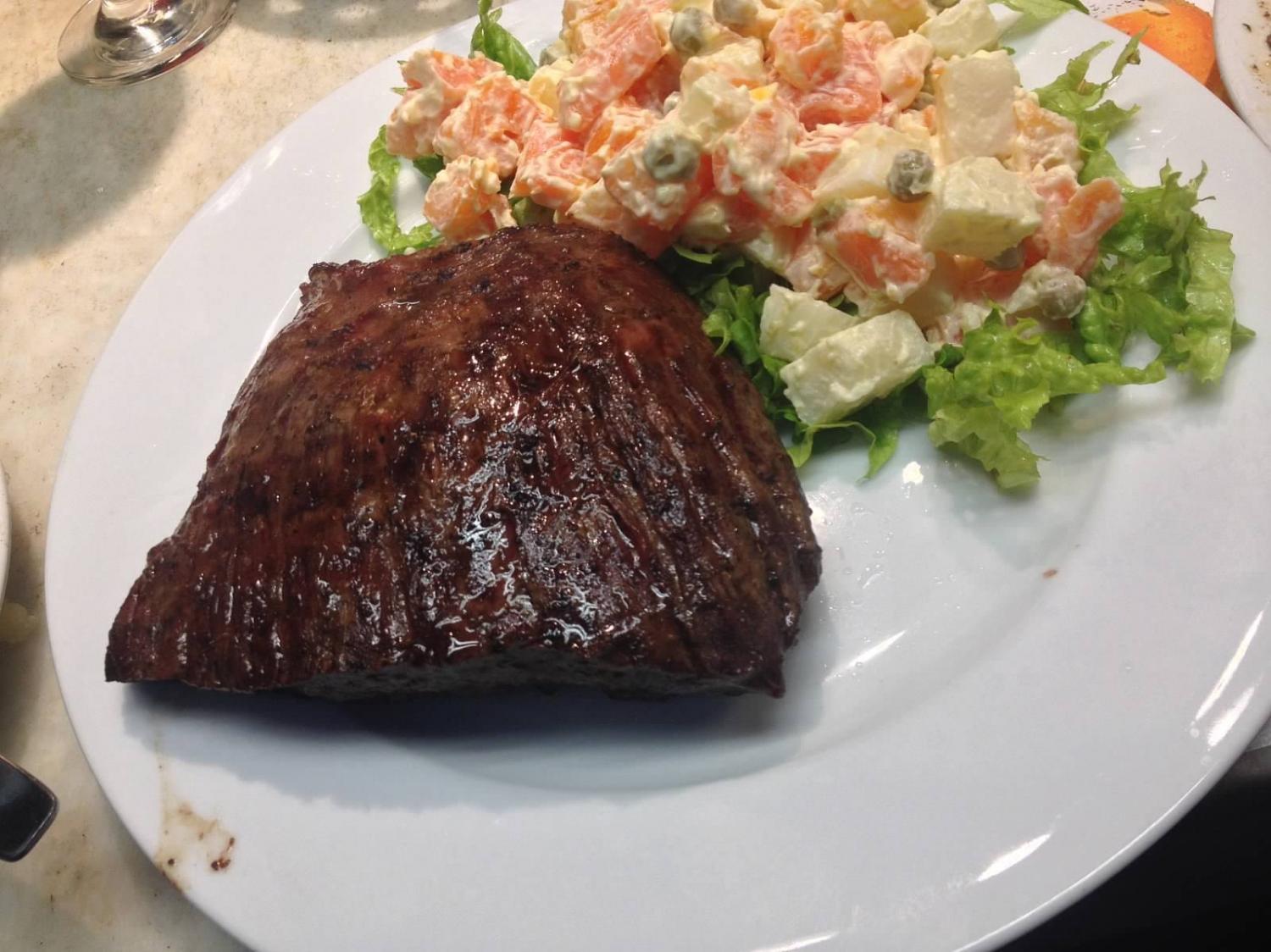

The discussion over whether we should eat meat foments all kinds of passion. Obviously the moral arguments have long been there, whether the focus is on what happens on factory farms or the outrage over Whole Foods going retro and selling rabbit meat. Ethics aside, the environmental facts are hard to ignore. More land is devoted to growing feed for livestock than food for humans. The global meat industry overall is a bigger polluter than the transportation sector.
Then you have the health arguments: meat consumption in the U.S. has almost doubled during the 20th century, hence the public health concerns over obesity and heart disease. Most medical professionals would advise small portions of meat occasionally has minimal, or even a positive effect, on one’s health, provided you limit those portions to four ounces (113 grams). But in an era where fast food restaurants are ubiquitous and steakhouses pitch the 16 ounce manly-man steak, it is not always easy to avoid meat.
So, should we start to view meat as a luxury?
In most of the world, it already is. Korean cuisine, for example, is notorious for its meat dishes such as bulgogi and galbi that are a common site from Seoul to Los Angeles. The reality for most Koreans, however, is that the cost of meat makes it one small part, or actually, even more of a seasoning, rather than the center of the meal. The smoky scenes over a grill we envision as Korean food is really more for a special occasion or a night on the town — the typical Korean meal is rice and soup with copious amounts of vegetables — not that different from Italy, where the average meal would consist of several platters of vegetables, a grain such as polenta or pasta, and maybe a little bit of meat.
Something got lost in translation here in the U.S., where average meat consumption was well under 100 pounds a year, or a few ounces a day, in 1920. Meatless Fridays were often the norm. That number has soared over the decades and is now on a downward trend, but thanks to factory farmed meat and increased demand, meat is still overall cheap. Well, not always — a New York Times article that appeared a few years ago pointed out a meal of beans and rice cooked at home for four people was one-fourth the cost of four fast food meals.
But what if meat were not cheap, but in fact, more of a rarity? The Tysons and Cargills of the world would have none of it, but viewing meat as an occasional food, and not as a birth right (like cheap gasoline), could do wonders for the environment, public health and even the economy.
One of the entrepreneurs riding this wave is Anya Fernald, co-founder and chief executive officer of Belcampo Meat Co., recently profiled in the New Yorker. On a farm nestled under Mount Shasta in the far north of California, Belcampo raises a bevy of different animals including grass-fed beef, game birds such as quail and partridges, and yes, rabbits. Belcampo’s butcher shops teach customers about new cuts of meat, many of which have been lost as beef moved away from the local shop to the Styrofoam tray—eliminating many cuts in the process (go to Argentina and Uruguay, and the cuts of beef you see in the shop will be unrecognizable from what you are used to seeing in North America).
Belcompo’s meat is not cheap, and Fernald has no intention to drive her prices down. Rather, as she explained to Food and Wine in another interview, she wants to show that locally produce sustainable food is profitable, while proving to consumers it is worth paying for quality — a tall order when we are used to buying boneless and skinless chicken breasts for a few bucks a pound.
But the trend is ongoing. More local butchers, such as Lindy & Grundy in the Fairfax district of Los Angeles, are selling meat raised on small farms—often carving the entire animal in cuts with which we are not familiar in front of consumers—that makes the meat counter at Whole Foods look low-rent. Of course the question comes up whether this whole local/organic/free-range/cruelty-free movement is elitist. But it is also important to remember the fact that beans, whole grains, pastas, and produce are all by far cheaper pound for pound than meat, and while “food deserts” are still a problem in American cities, the average supermarket still carries plenty of nutritious cost-effective food for those of us living paycheck-to-paycheck.
The focus on changing how we look at meat, from animal welfare, to avoiding cheap GMO-grains as animal feed, to actually learning how to dress and prepare meat, is about more than cost. It’s about investing the time to preparing a meal—which takes a while if done correctly—and transforming a meal into something to savor, not just whip out quickly. Or as many slow food advocates like to say, we need to be “more connected” with our food. If these new businesses can convince consumers that spending more on meat, yet less often is a plus for our health that of animals’, we could be on the right way to righting an industry that has taken far too much of a toll on animals, people and the planet.
Image credit: Leon Kaye
After a year in the Middle East and Latin America, Leon Kaye is based in California again. Follow him on Instagram and Twitter. Other thoughts of his are on his site, greengopost.com.
Photo Gallery: How e-Golf Batteries Are Made


Last month, I was lucky enough to be one of the first Americans to hop behind the wheel of the 2015 e-Golf, Volkswagen’s first fully-electric vehicle for the North American market. The car offers a smooth ride and a good deal of pep, with a best-in-class torque of 199 foot-pounds (the standard torque measure).
Its 24.2 kilowatt-hour lithium-ion battery is no slouch either, providing 70 to 90 miles of range on a single charge. Like the e-Golf's electric motor and transmission, the battery was developed in-house and is made at Volkswagen’s manufacturing facility in Braunschweig, Germany.
The Braunschweig plant, the oldest in operation for Volkswagen Group, has been manufacturing conventional batteries for more than 75 years. Eighteen months ago, it began producing batteries for the automaker's first electric vehicle, the E-Up! (available in European markets only). Earlier this year, Braunschweig added batteries for the European and North American e-Golf models to its portfolio, and it's now the only plant to churn out batteries for Volkwagen's two electric vehicles.
Before the batteries ever hit the manufacturing floor, a team of 170 engineers at Braunschweig spent months developing their design. In the development phase, the biggest challenge for VW engineers was how to get the most energy out of the battery with the smallest size, while still meeting safety standards, said Dr. Holger Manz, head of the battery development department in Braunschweig.
Sounds pretty familiar, but the result here at Volkswagen is nothing less than a testament to the ingenuity of German engineering. For the e-Golf, the automaker decided on the same Modular Transverse Matrix (MQB) architecture it uses for the regular Golf, its most popular model in Europe, enabling engineers to place the large battery within the chassis architecture. In the 2015 e-Golf, the battery rests in the center tunnel just ahead of the rear axle and below the rear seats, eliminating cabin intrusion or a reduction in interior space.
In a move that seemed curious to some, Volkswagen also eliminated the use of active liquid cooling systems in favor of a simpler air cooling design. As Manz put it, the Panasonic battery cells VW chose are so efficient, an active cooling system "wasn't necessary."
"Our battery system here at Braunschweig is very well developed, so the customer can be sure he's driving a very safe car," Manz told a group of journalists at the battery plant last week.
Each battery is comprised of up to 2,500 individual parts, and Braunschweig produces one electric vehicle battery every 20 minutes. While in Germany last week, I had a chance to tour the battery plant in Braunschweig, along with nine other American journalists, and catch an up-close look at how e-Golf batteries are made. Click the first photo to open the gallery and catch a glimpse for yourself.
[gallery link="attachment page" ids="196544,196545,196546,196547,196548,196549,196550,196551,196552,196553,196554,196555"]
All images by Mary Mazzoni
Editor's Note: Travel expenses for the author and Triple Pundit were provided by Volkswagen.
Based in Philadelphia, Mary Mazzoni is a senior editor at TriplePundit. She is also a freelance journalist who frequently writes about sustainability, corporate social responsibility and clean tech. Her work has appeared in the Philadelphia Daily News, the Huffington Post, Sustainable Brands, Earth911 and the Daily Meal. You can follow her on Twitter @mary_mazzoni.
Beetcoin: A New Way to Invest in Local Agriculture


Editor’s Note: This article originally appeared in “The Millennials Perspective” issue of Green Money Journal. Click here to view more posts in this series.
By Woody Tasch
For the past five years, Slow Money has been working along the boundaries of angel investing, impact investing and philanthropy to catalyze the flow of capital to small, organic food enterprises that are rebuilding local food systems. As the preceding sentence implies, this work takes a number of different shapes, including local networks, investment clubs, pitchfests and, very recently, our Beetcoin campaign. The campaign combines online donations with event-driven, interest-free loans to create what we hope will become a long-term, scalable funding resource deployed alongside local Slow Money investing activities.
As of mid 2014, more than $38 million has flowed into small food enterprises in the U.S., Canada, France and Switzerland, via 21 local networks and 13 investment clubs. Our first Beetcoin campaign began Oct. 1 and will end Nov. 12, at Slow Money 2014 Gathering in Louisville, Kentucky, where 21 entrepreneurs will present on stage and the top two vote-getters will share Beetcoin proceeds. (More details here.)
The overall context for Slow Money, and the introduction of Beetcoin, are described below, which is excerpted from "Commons nth: Common Sense For A Post Wall Street World," a pamphlet available free from Slow Money.
Industrial agriculture and industrial finance are two sides of the same coin
The food system is great at producing cheap, shelf-stable food, but it's equally great as a contributor to many significant systemic problems: soil erosion, carbon in the atmosphere, an obesity and diabetes pandemic, aquifer depletion, loss of biodiversity, and high costs of intermediation (less than 10 cents of every consumer food dollar gets to a farmer). The finance system is great at facilitating enormous capital flows and wealth, but it's equally great as a contributor to many fundamental systemic problems: unequal distribution of wealth, short-term thinking in the executive suite, securities that are too complex to regulate, banks that are too big to manage, and layers of intermediation that are rigged in favor of (to use the words of John Bogle, founder of the Vanguard Group, one of the world’s largest asset management firms) “the croupiers.”
We need to learn how to earn, save and invest a new kind of coin. Consider Beetcoin.
Introduced by Slow Money in September 2014, Beetcoin collects contributions and directs these funds to small, organic food enterprises, by popular vote, as 0 percent loans. The first recipients of Beetcoin proceeds will be food entrepreneurs who make presentations at Slow Money 2014: A Local and Global Gathering on Food, Investing and Culture, on Nov. 10-12 in Louisville, Kentucky. (For more information on Beetcoin and the event, go to www.slowmoney.org )
Here’s a glimpse of the kind of enterprises that have received support via Slow Money local networks and investment clubs over the past few years: Small Farmer Aaron Campbell (NC); Maine Grains (ME); Point Reyes Compost (CA): Urban Farming NGO & Revision International (CO); Brooklyn Grange, world’s largest rooftop garden (NY), Chatham Marketplace food co-op (NC); Organic home delivery, Greenling (TX).
As evidenced by the emergence of community supported agriculture and the dramatic increase in the number of farmers markets over the past few decades, a new generation of small and mid-size organic farms is in the offing, along with the many enterprises that will bring their product to market. Yet despite robust growth, organics still accounts for only 4 percent of the food industry and organic farmland in the U.S. accounts for only 1% of total farmland. Where will the capital come from to support the next stages of structural change? It will not come, either in terms of quantity or kind, or soon enough, from Wall Street, Washington or the foundation community.
Wall Street and Washington are each dysfunctional in their own way; both are captive to top-down, industrial solutions and the influence of special interests. The foundation community has its own set of structural limitations. Organized around the provision of grants to non-profits, foundations have great difficulty moving towards mission-related investing or impact investing, and the risk/return/impact equation of small for-profit food businesses does not quite compute for them. Roughly one quarter of one percent of foundation grants go to sustainable agriculture and the amount of mission-related investing by foundations in the food sector is barely calculable as a percentage of total foundation assets.
Read Woody's complete article from the November issue of GreenMoney here: http://bit.ly/1qh3zwj
Woody Tasch is founder and chairman of Slow Money, a nonprofit headquartered in Boulder, Colo.
Volkswagen Launches New Auto Apprenticeship Program
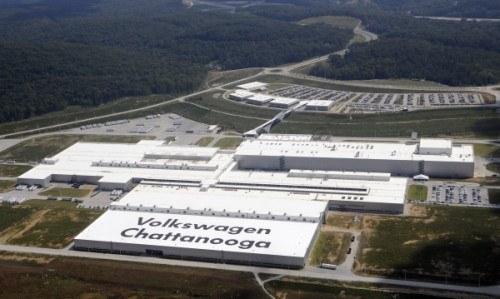

Volkswagen’s Chattanooga, Tennessee plant is well known for its accomplishments in environmental sustainability. It claims the record as the world’s first Platinum LEED certified automotive facility, and its 9.5 million watt solar array, cool building strategies and water catchment systems have garnered environmental awards and global recognition. Just as importantly, the plant’s design has proven to industry leaders that sustainable approaches can have a place in high-energy-usage industrial settings.
And green tech isn’t the only place where Volkswagen has been applying its sustainability talents these days. Workforce education plays a critical role in today’s automotive industry, where a robotized production line commands a higher need for specialized training, not less. Automotive positions that interface with that mechanized environment now benefit from a college education and specialized training that goes beyond the manual, front-line labor of previous generations. Today’s workers are in many cases, the essential support network that keeps those robots repaired, wired and working.
But there’s a catch. Getting trained mechatronics personnel who are familiar with VW’s specialized, LEED-compliant operations and who have met the scholastic requirements of an associate degree or above can be a challenge. A two-year degree in automotive mechatronics varies widely in cost in the U.S., ranging from $10,000 for the live-at-home in-state resident, to upwards of $20,000 for the out-of-state student who pays full price and may live off-campus. And that still doesn’t meet the greatest challenge of all: ensuring that newly minted graduates can land on their feet running and adapt to VW’s own specialized way of building cars from the date of hire.
That’s where the dual apprenticeship programs come in. According to Ilker Subasi, who serves as the assistant manager of technical training at VW’s Chattanooga plant, the company’s three-year mechatronics associate degree – the first of its kind in North America – blends the on-the-job training with the classroom curricula of a college-level associate degree program. It gives the Chattanooga College student the ability to link the theoretical with the hands-on application in the factory. And it gives VW a potential roster of trained, skilled professionals to hire.
By housing the apprenticeship program on site, VW is able to tailor its new mechatronics programs – automation mechatronics program and the car mechatronics program – to fit the schedule within the plant, offering the new students an up-close view of the work environment as well as daily hands-on experience.
“It is unique to have an associates degree in a hands-on training program in a company. Basically, they don’t go to the campus of Chattanooga Community College,” said Subasi. “They all stay at the plant and the teachers [come] to us.” The students earn a monthly stipend during the three years of training, and if they pass the final testing, are offered a job upon completion that comes with benefits and a competitive salary.
Automotive apprenticeships are a new concept in the U.S. and gaining attention for their ability to solve a fundamental problem of the 21st century: how to equip unskilled labor for an increasingly technical and changing manufacturing environment. In Germany and other European countries, apprenticeship programs are common and fill a vital niche in the labor market. Here in the States however, the concept of the paid student worker who competes to study and train onsite has fallen off. Only about five percent of workers enroll in apprenticeship programs, compared to a whopping 60 percent in Germany.
But VW representatives admit that launching the first apprenticeship program in Chattanooga took some legwork. Both Tennessee’s State Board of Education and Chattanooga College had to be convinced that a program that integrated a college degree and automotive training and was taught and accredited completely on site would really work.
“We’ve worked hard to get the word out,” admitted Scott Wilson, who is the head of Communications and Public Relations. “It’s really a matter of education. People didn’t understand what it meant.”
But today, with one graduation under its belt and a growing roster of applicants for the two programs, as well as a proven track record in being able to place the students they’ve trained, VW can say that its German apprenticeship program is in fact, transportable, and offers a framework that can be used to fill other educational niches as well.
This year, Chattanooga launched a new apprenticeship program that would integrate the skills of college-educated engineering specialists who already have a Bachelors degree and want to tailor their skills to mechatronics.
“We provide them hands-on comprehensive training in 18 months,” explained Subasi. It’s geared toward electrical engineering and machining professionals that may have never worked in an automotive plant, but have the advanced skills that VW needs on its workforce. The first month provides an accelerated introduction to mechatronics. The remaining time is spent in the engineering department. At the end of the 18 months, the student is sent overseas to Germany to experience what it’s like to work in one of VW’s other plants. Like the mechatronics associate-degree programs, the engineering specialist program is accredited through Chattanooga Community College.
Although it is only in its pilot stage, VW expects to have the engineering program will get a good response. Like the mechatronics apprenticeships, it fills a void in today’s vocational job market by helping to merge solid academic training with the needs of a dynamic and increasingly mechanized industry.
And they are helping to transform the U.S. job environment in other ways as well. Enrollees in VW’s apprenticeship programs are encouraged to take training sabbaticals overseas. Mechatronics and engineering students both receive classes in German during the academic portion of the training, making it easier for them to apply for limited assignments in Germany and other parts of the world. The benefit expands their exposure to other languages and broadens their experience in other cultural settings. Subasi said the concept appeals to VW’s global vision.
“It’s part of our global strategy to have flexible workforce development,” said Subasi, who notes that VW has more than 106 plants across the globe. We are really a global player. We have over 560,000 employees worldwide. So we have to be flexible.”
The programs also help to reduce downtime due to unexpected vacancies, since they are cross-trained in a number of areas, said Albert Graser, VW’s technical training specialist in Chattanooga. “Our qualifying students are able to work in a number of areas, so if there’s an issue in electrical mechanical or what have you, these guys are trained to work in all the areas and are pretty self-sufficient.
After more than three years on Chattanooga College’s academic roster, VW’s apprenticeship programs are beginning to garner attention from Washington and Nashville. Wilson said the new programs have driven home the point that “skilled maintenance jobs, skilled manual labor jobs are viable alternatives for people to have a productive career.” And just as importantly, it’s helped to illustrate ways that businesses can – and perhaps should – play a role in shaping the education that will ultimately define their future workforce.
Images courtesy of Volkswagen Group of America
James Beard Foundation Examines Food and Health
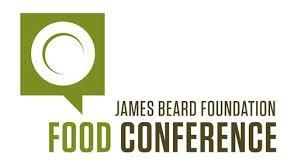

Health & Food: Is Better Food the Prescription for a Healthier America? – a two-day conference hosted by the James Beard Foundation (JBF), showcased the good food movement’s effect on the culinary world. JBF, a revered culinary arts institution, brought some of the biggest names in food advocacy before an audience of advocates, entrepreneurs, civil society leaders, industry reps, producers and, yes, chefs.
JBF put together an all-star line up to stimulate dialogue on the health impacts of the modern American diet. Ezekiel Emanuel, former senior health policy advisor on health care for the White House, gave the keynote. His speech was followed later by Laurie David, executive producer of "Fed Up," and Marion Nestle, food politics author and professor at New York University. On day two, the crowd heard from Sam Kass, President Barack Obama's senior policy advisor for nutrition policy, and author Michael Pollan. Yet, it was the lesser-known voices that stole the show.
The “carefully curated” speaker schedule wove narrative through an ambitious scientific and political agenda. While the morning was dedicated to the complex impacts of often well-masked sweeteners in our food and drink, community activists took center stage in the afternoon. The Bigger Picture Campaign introduced young slam poets who electrified the room, using video to drive home a clear message: access to healthful food is a justice issue. Vividly capturing tensions between hunger and satisfaction, in the context of violence and addiction, artist Joshua Merchant underscored the painful truth; the choice to eat healthfully is a luxury not everyone can afford. In an emotional plea, Navina Kahnna pushed for community leadership that extends beyond community engagement -- and fosters community ownership of food access points.
Ben Burkett, president of the National Family Farmers Coalition, bridged the urban-rural gap when discussing communities bowed down by diabetes and the obesity epidemic. Burkett led with commentary on the dismal health indicators characteristic of his home state of Mississippi. As he gently poked fun at the audience and the increasingly fickle demands of Northeast consumers (seedless watermelon ... really?). He spoke plainly of narrow farm margins and broadened the food equity conversation to include producers.
The juxtaposition of speakers revealed the naivety of the expression “farm to fork.” In her remarks, Toni Griffin, founder of Urban Planning and Design for the American City, recognized the cultural and institutional history that shapes our nation’s food system. There was not much time for grappling with such complexity though, as Mark Bittman was posed a series of dualistic choices: Organic or local? GMO or antiobiotic free? Chocolate or vanilla? In doing so, Mitchell Davis, the executive vice president of JBF, exposed one of the food movement’s greatest challenges: communicating nuanced scientific and political issues to catalyze action.
Check back for more conference coverage and a look at how JBF, food business entrepreneurs, and funders are getting involved to improve dietary health. In the meantime, if you're curious about the healthfulness of your food choices, play around with the Environmental Working Group's new guide, Food Scores.
Annie Leonard: Reconnecting to Your Role as a Changemaker


In the wake of the success of the Story of Stuff, Annie Leonard, now executive director of Greenpeace, had the opportunity to travel to dozens of colleges and universities. In her keynote talk at the opening ceremony of the AASHE 2014 conference in Portland on Sunday, she shared that while in college she thought of the journey to sustainability as a sprint. Today, she has matured into thinking about it as a relay race, where we might not be around to see the results we are working toward.
According to Leonard, change is slow and hard. Below are several tips from Leonard on how to reconnect with your role as a changemaker and recommendations on leverage points that can make a real difference, including commit to 100 percent renewable energy, divest from fossil fuels, leverage purchasing and encourage student engagement, as well as some great advice on how to stay positive on the path to sustainability (don't miss the last quote at the bottom of the post). While targeted toward higher education professionals, many of these tips apply to any company or institution.
Reconnect with your role as a changemaker and build your 'citizen muscle'
Leonard's theory of change is based on the idea that we have two parts of ourselves, two different muscles: a 'citizen muscle' and a 'consumer muscle.' What keeps Leonard up at night is a worry that we have forgotten as a country how to make big, bold changes, and she is advocating that we all build our citizen muscle.
Forget about striving to be an eco-perfect person. We can't perfect our lifestyles, nor our institutions, within a context that is not sustainable. As many of us know, swimming against the current, against the existing system, is exhausting. She argued, to get serious about innovation for sustainability, the most important thing we can do is reconnect with our sense of being a changemaker and flex our citizen muscle. Her call to action: Move beyond small, individual, minor actions and find ways to scale-up bigger, more strategic solutions.
Commit to 100 percent renewable energy
I had the great opportunity to speak personally with Leonard the morning after her speech. I was curious what top action she recommended as a potential game-changer for higher education.
”I think that going to clean energy is the number one thing. Commit to 100 percent renewable energy," Leonard said. "This is really important. We can’t expect the energy providers to switch over unless they are secure the demand is there."
She pointed to Greenpeace's new campaign Clicking Clean, which is working with business leaders to green their data centers. “If places like Apple, Google and Facebook can do it, colleges and universities can do it,” stressed Leonard. Collective commitments from these companies is providing a clear signal to utilities to build more renewable energy facilities, rather than coal-burning power plants.
Some other ways you can exercise your citizen muscle include:
- Divest from fossil fuels: Some argue that even if you could get colleges to divest, it is just a drop in the bucket and won’t really hurt the bottom line of fossil fuel companies. However, according to Leonard, it is an incredibly important campaign. She believes that when colleges divest from fossil fuels, "it begins to remove the social license of companies. Do everything you can to get your university to divest from fossil fuels. And to invest in the clean-energy economy."
- Leverage purchasing: She pointed to campus-wide procurement as a way to leverage purchasing and scale-up impact. She recommended the Sustainable Purchasing Leadership Council as a great resource to help institutions. Creating demand for greener products, whether for recycled paper or a commitment to 100 percent clean energy, is really important for the carrot part of getting the economy to change.
- Encourage student engagement: “In terms of process, the number one thing schools can do is encourage student engagement," said Leonard. She urged campuses to include student representatives in all decision-making bodies. She believes this pays off because when students have formal roles on decision-making panels, and opportunities to participate, they own these problems. Enrolling people to co-own and be part of figuring out the solution is a great way to get better, faster solutions. She is also excited about the explosion of student-led initiatives. From organic food in the cafeteria to advocating for divestment from fossil fuels, students are actively involved in a range of campus sustainability-related projects.
How to stay inspired?
Leonard's positive energy is contagious and I asked her if she could share a few tips on how she personally stays inspired. A few ideas she shared include:
- Find a buddy: It is easy to feel alone or marginalized on the path to sustainability. Find a buddy or allies. She pointed to Greenpeace Greenwire, an online platform where students can find other students who want to get together to work on these issues.
- Take the changemaker quiz: Did you take the quiz yet to determine what kind of changemaker you are? Once you have done the quiz, you will get an invitation to participate in the Citizen Muscle Boot Camp, a new group program that will build your citizen muscles (currently in Beta testing right now).
- Focus on solutions: Seek out information about solutions. Go to the Biomimicry website, read YES! Magazine, go to conferences, or visit solutions. “I visit solutions often, because if you actually visit them and see them with your own eyes, you internalize the knowledge that there is a better way. It seeps into every cell of your body, so you can’t get depressed because your entire body knows there is a better way," shared Leonard.
- Make a personal decision to wake up every morning happy and excited: And last, but so not least, were some final thoughts from Leonard that brought tears to my eyes. I conclude with the entire quote because I found it very powerful:
"There is one other thing I do. I just made a personal decision not to get depressed. It is a personal decision. It is my most personal, fundamental act of resistance. I feel that these planet destroyers have taken so many things from us — the people who I loved that have died from cancer, the rivers that I used to swim in as a kid that I can’t swim in now, and my ability to breastfeed my child without fear. They have taken so many things from me. So I decided to draw a line right in front of me and say you can’t have my sense of joy and hope. It is a very fundamental, personal act of resistance to wake up every morning happy and excited."Images by the author